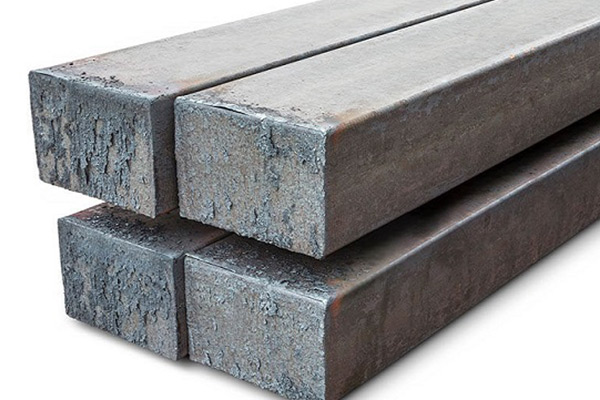
Steel Ingots
What is steel ingots?
Steel ingots and their types:
Ingots, or to put it more scientifically, billets, are produced by the ccm method all over the world. Ingot is a rolled steel product and is produced in the form of billets and blooms (ingots). Billets are circular or square in shape and are used to produce wires and rebars. The blooms are square in shape and have larger dimensions and are used to make beams, cans, corners, rails-studs and..
Types of steel ingots
There are different types of ingots:
1. Shamsh CCM
If the ingot is prepared and used directly from the production of ccm for rolling consumption, it is called ccm ingot or billet.
3- Fabric ingots
If the ingot is produced in higher sizes and after the rolling process becomes the desired size for use in sectional rolling, that ingot is called a fabric. In the past, this type of ingot was known as Bloom, but over time and with the change of merchants' literature, the name It was changed to fabric ingots.
3- Bloom ingots
Bloom ingot is a ingot that is cut from the side of the slab or the whole slab is turned into ingot because the size of the ingots prepared from the slab is usually more than 150 sizes. This type is known as bloom.
Note: In general, the method of production of all ingots is the same and there is not much difference between the process and their name.
The difference between a Bloom billet and a slab
What type of ingot is needed to produce different types of rebars?
In order to produce low size and high size rebar, the point that is more important than the size of the ingot is the amount of carbon in the ingot and its analysis. Ingot with carbon 30 to 35 is used for rebar size 14 to 40. However, it is used for lower sizes due to the need for more softness and traction of low carbon ingots.
Ingots 150, 125 or 130 are not much different for rebar production, and some factories use and charge 150 ingots depending on the rolling line, and some use both because they are more modern. Bloom is sometimes used to make rebar, depending on the design of the rolling line.
New high-tech production lines usually use 120 or 130 ingots for small rebars and 150 ingots for large rebars.
Some production lines are designed in such a way that they can produce small rebars with 150 ingots, such as sizes 8 and 10 or even coils.
In our country, rolling lines that are old use only 120 ingots or a maximum of 130 ingots to produce rebars and do not have the ability to produce rebars from 150 ingots.
generally :
100,120,125,130,150,160 are called billets and ingots with higher dimensions such as:
180 * 180,200 * 200,250 * 250 Bloom is considered and this category is mostly used for the production of industrial rebars.
The difference between billet and bloom ingots
Apparently, there is some difference in the way the market uses the words and expressions of Bloom and Billet ingots.
1. Bloom ingots are mostly used for industrial rebars in some countries such as China and Ukraine due to high production of steel and unbalanced production and capacity of ccm machine and in some cases due to customer demand, bloom ingots are produced in sizes 180 and above and then By one rolling step, the dimensions of the billet ingot are reduced to 160. The billet ingots produced by this method have a higher density and are mostly used in industrial applications.
2. 3 sp or st44-2 ingots with a maximum carbon load of 22, are usually used in the production of corners and studs or in some cases in the sizes of fine rebars.
3. Basically, 5sp ingots are mostly used to produce rebars up to size 25. Gr60 grade ingots are used to produce rebars of size 25 and above.
4. To produce the coil, 5sp grade ingots, st34 1006,1008 are used.
Bilt and Bloom
The entire steel chain of the country consists of four layers:
Top-tier manufacturers related to the mining industry
Input: Minerals
Output: iron ore, iron pellets, sponge iron and concentrate
Ingot Manufacturers
Input: Level 1 output and scrap
Output: Types of ingots including billets, blooms and slabs
Manufacturers of the final product
Input: Level 2 output
Output: Finished product ready for distribution such as long sections of rebars, beams and studs and…
Final sellers and warehouse owners (iron sellers)
Input: Level 3 output
Output: Simplify and speed up sales by adding capital and connecting with the customer and the consumer market
What is the difference between induction furnace and arc products?
The arc produced by the arc method has a better quality than the induction furnace because it performs one more analysis step.


